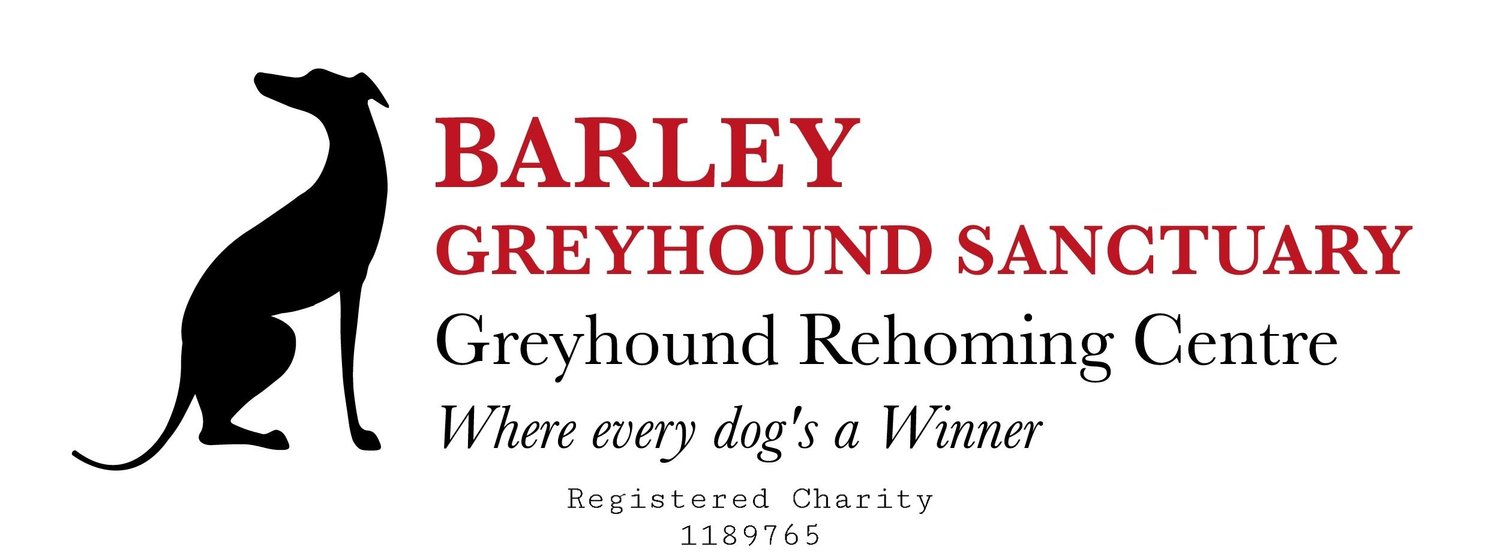Greyhounds with children
We often get asked if Greyhounds are good with children…… the simple answer is yes, most of them are excellent because Greyhounds have naturally kind and gentle natures BUT care must be taken at all times and that goes for any animal whenever they are with a child.
Greyhounds generally get on extremely well with children but children should always be taught to respect the dogs boundaries and personal space.
There is a lot of sense in the old saying ‘Let sleeping dogs lie’ and children should be taught to never approach / touch a dog while he/she is asleep or relaxing, especially if the dog is on it’s own bed (or the sofa if you allow your dog onto the sofa).
Children should never tease a dog with food or toys and they should never poke, prod, grab squeeze or pinch a dog in any way or pull at their ears, fur or tail. Children should also not go near the dog when he/she is eating their meals or treats.
Greyhounds have the most amazing temperaments but like any breed they will have a breaking point if tormented by a child.
We have successfully homed hundreds of Greyhounds to families with children over the years and most settle brilliantly without any problems. If there are ever any issues it is quite often a result of the child not knowing/being told when to leave the dog alone or due to sleep startle. Sleep startle is seen in all breeds but can be more common in Greyhounds because during their lives in kennels they have never been touched when they are asleep. It’s really important to understand sleep startle (whether you have children or not) and you can find out more about it here - UNDERSTANDING SLEEP STARTLE IN GREYHOUNDS — Barley Greyhound Sanctuary (barleykennels.co.uk)
The dog should always have a safe space to retreat to where they will be left alone to rest.
Although Greyhounds generally walk nicely on the lead, Children should never walk a Greyhound alone or hold their lead alone because Greyhounds can become very excitable/strong in a split second if they see prey or if they become frightened by something which can easily pull a child of their feet or result in the child letting go of the lead and the Greyhound disappearing into the distance.
If it’s likely that your child won’t listen to you or understand that the dog needs his/her personal space respecting, then it is best to wait and not try to adopt a dog until everyone understands.
Following the advice below will hopefully help your dog and children have a happy and safe relationship.
NEVER leave children unattended with a dog.
Dogs may be more protective around their bowls, food, bed and toys so children should be taught to keep a safe distance around these.
Let sleeping dogs lie – never let children disturb a resting or sleeping dog. Your dog should always have a quiet place they can retreat to when needed.
Always be careful with the little things your children may leave lying around. Be particularly careful with elastic bands and hair bobbles as children may try to put these on the dogs’ legs, ears or around their necks and be careful of small objects that the dog could swallow which can lead to serious injuries.
Let the dog come to your child and teach them to stay calm as they approach.
Do not allow your children to feed your dog while they are eating. This can encourage begging behaviours, or even stealing food from your child’s hand or plate.
Practice safe hygiene between your dog and children. Pick up any dog poo immediately so your children can’t touch it and always get your children to wash their hands after petting or playing with the dog.
Children’s toys are not dog toys! (and vice versa!) Try to keep your child’s toys and dog’s toys separate so that your dog learns the difference. Children’s toys can be fun to chew but easily destroyed into little pieces so always be careful that your dog does not swallow anything they shouldn’t.
Never let your children approach dogs they don’t know. Always ask the owner if it’s okay for their dog to be petted.
If you notice any behavioural changes in your dog, contact your adoption group and vet immediately. They can check for any medical issues, give you advice and refer you to a behaviourist if needed. Don’t wait for your dog to bite before taking action!
Helping children to understand and recognise the subtle signs that a dog is feeling uncomfortable, anxious or afraid can be key to keeping them safe around dogs.
Signs a dog is uncomfortable:
Turning their head away
Seeing the whites of their eyes
Being tense
Having their ears back
Licking their lips
Yawning
Panting
Pacing around
Growling or baring their teeth
Hiding
Low body posture or cowering.
If the dog your child is interacting with is showing any of the signs above, it is important they know to leave the dog alone.
Don’t take unnecessary risks and make sure you set your dog and children up for success.
When the correct care is taken Greyhounds really do make amazing pets for families with children as you can see from the photos below.














